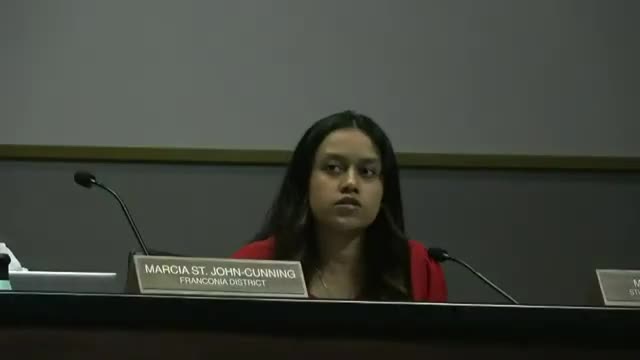Students call for grading reform to ease exam pressure
October 25, 2024 | FAIRFAX CO PBLC SCHS, School Districts, Virginia
This article was created by AI summarizing key points discussed. AI makes mistakes, so for full details and context, please refer to the video of the full meeting. Please report any errors so we can fix them. Report an error »

In a recent government meeting, students voiced their opinions on the newly revised grading structure, which standardizes formative and summative assessments at a 70:30 ratio. While many students appreciate the consistency this brings, concerns were raised about its effectiveness across different subjects.
Students highlighted that the grading split can be particularly challenging in math classes, such as calculus, where the majority of their grades stem from summative assessments like tests. One student noted that despite having 20 grades in the formative category for daily assignments, only three summative grades were counted, leading to a disconnect between their daily efforts and overall performance. This disparity can be exacerbated by test anxiety, which affects students' ability to perform well on fewer, high-stakes assessments.
Conversely, students in Career and Technical Education (CTE) classes, such as STEM Engineering and Game Design, found the 70:30 weighting to be effective. In these subjects, daily work builds towards a significant final project, making the heavier emphasis on summative assessments more appropriate.
The meeting also addressed the policy allowing students to retake summative assessments for a perfect score of 100%. While some students appreciated this opportunity, others expressed concerns that it diminishes motivation to study, as they feel they can simply retake tests without consequence. This policy has led to increased stress for both students and teachers, as the need to manage retakes complicates the teaching of new material.
To alleviate these issues, students proposed capping retakes at a score of 90% instead of the current 100%. This change would still allow for improvement while reducing the pressure for perfection and easing the grading burden on teachers.
The discussions reflect a growing need for a more nuanced approach to grading that considers the diverse learning environments and assessment types across different subjects.
Students highlighted that the grading split can be particularly challenging in math classes, such as calculus, where the majority of their grades stem from summative assessments like tests. One student noted that despite having 20 grades in the formative category for daily assignments, only three summative grades were counted, leading to a disconnect between their daily efforts and overall performance. This disparity can be exacerbated by test anxiety, which affects students' ability to perform well on fewer, high-stakes assessments.
Conversely, students in Career and Technical Education (CTE) classes, such as STEM Engineering and Game Design, found the 70:30 weighting to be effective. In these subjects, daily work builds towards a significant final project, making the heavier emphasis on summative assessments more appropriate.
The meeting also addressed the policy allowing students to retake summative assessments for a perfect score of 100%. While some students appreciated this opportunity, others expressed concerns that it diminishes motivation to study, as they feel they can simply retake tests without consequence. This policy has led to increased stress for both students and teachers, as the need to manage retakes complicates the teaching of new material.
To alleviate these issues, students proposed capping retakes at a score of 90% instead of the current 100%. This change would still allow for improvement while reducing the pressure for perfection and easing the grading burden on teachers.
The discussions reflect a growing need for a more nuanced approach to grading that considers the diverse learning environments and assessment types across different subjects.
View full meeting
This article is based on a recent meeting—watch the full video and explore the complete transcript for deeper insights into the discussion.
View full meeting
